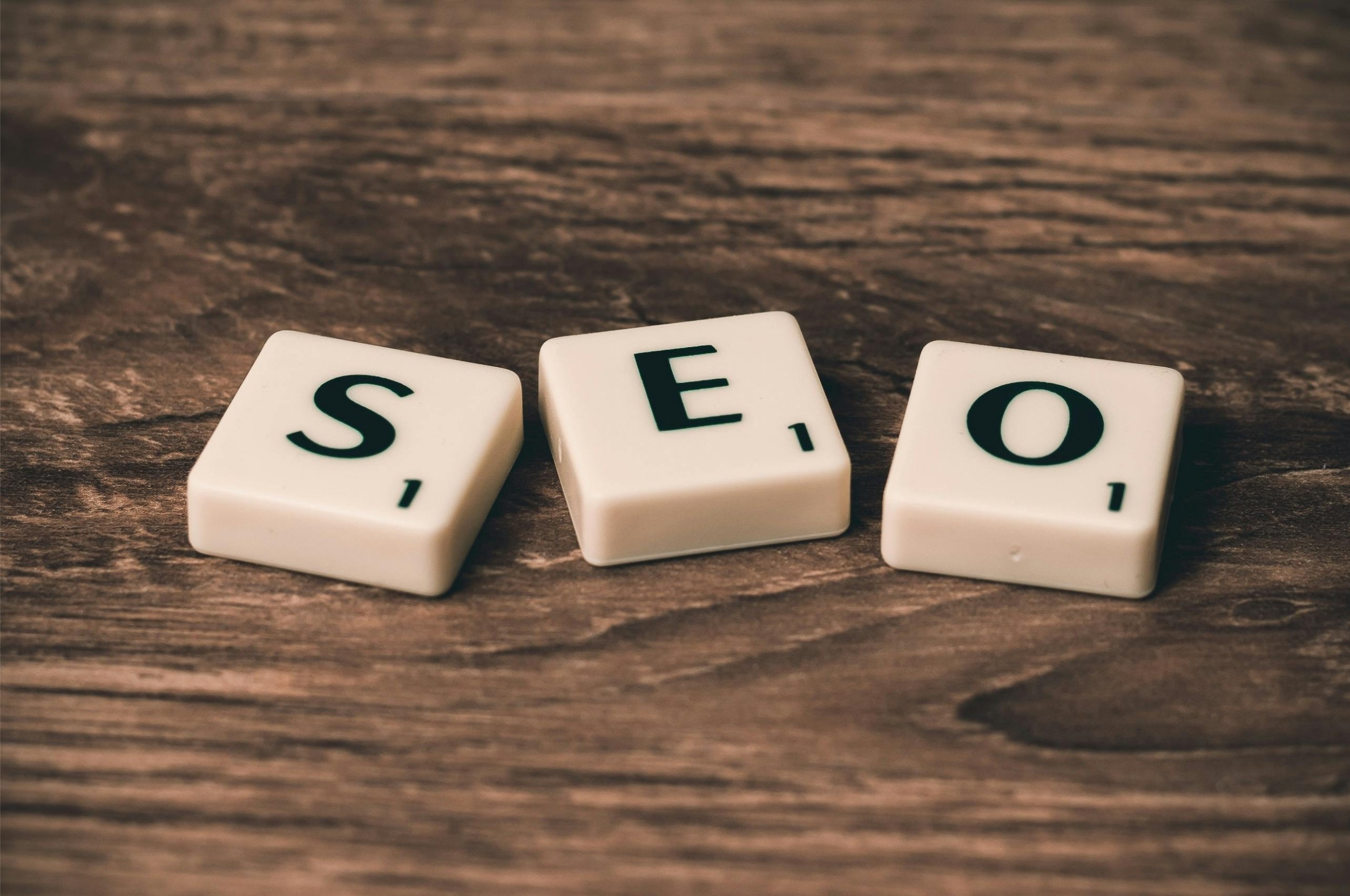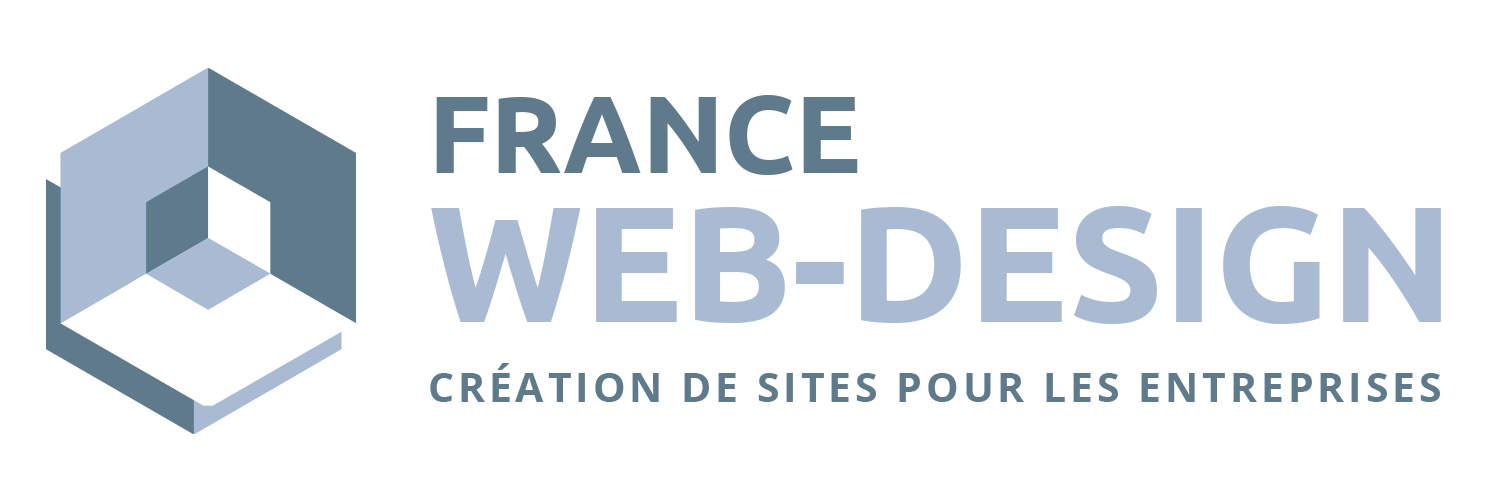Why is SEO important for photographer and studio websites?
With the rapid emergence of digital technology, all industries are looking to establish and expand their online presence. And this trend has not ignored the world of photography. Photographers and studios are increasingly present online and looking to optimise their websites for search engines. Search engine optimisation, or SEO, is a set of techniques designed to improve a website's ranking in search engine results. Although SEO may seem technical and complicated, once you understand it, it is quite manageable and can bring significant benefits.
The importance of SEO for photographers and studios
Photographer and studio websites are essentially part of the visual industry, which is evocative and heavily reliant on images. As many photographers rely on their websites to showcase their work and attract new clients, it is crucial for them to optimise their SEO and ensure that their site is easily found by search engines. Whether you're a professional photographer looking to attract more clients, or simply a hobbyist looking for greater exposure for your work, a good SEO strategy can help you achieve your goals.
Understanding the basics of SEO for photography
Before diving into the more technical aspects of SEO, it's important to understand some of the basics. First and foremost, content is king. No amount of optimisation can compensate for mediocre content. As a photographer, your content consists mainly of images. So you need to make sure that all your images are of high quality, that your descriptions and metadata are accurate and useful, and that you use the right keywords. Secondly, the loading speed of your site also has a major impact on your SEO. Nobody likes to wait for pages to load, especially image-heavy pages. So make sure you optimise the size and format of your images to ensure a smooth browsing experience.
SEO tips for photographer and studio websites
Beyond the basics, there are a number of specific strategies and techniques you can use to optimise your SEO. One of these is optimising your alt tags for images. Alt tags are text descriptions added to images on a website that help search engines understand what those images represent. Another way to optimise your SEO is to use title tags and metadata correctly. These elements provide important information to search engines about the content of your site, and are essential for improving your SEO.
Need a website?
Ask for a free quote!
html
Keyword research: exploring photographic intent
The first reflex of a photographer who wants to gain visibility is often to concentrate on the aesthetic appearance of their portfolio. However, keyword research remains the compass for SEO. The terms typed in by a bride-to-be looking for a "bohemian wedding photographer Bordeaux" are not the same as those of a "wedding photographer Bordeaux". an artistic director on the lookout for a "still life cosmetics photographer Paris". Using a tool such as AnswerThePublic or Semrush can be used to map the precise questions asked by these two personas. One recommended approach is to create a table cross-referencing intent (informational, transactional, navigational), monthly volume and sales potential. For example, the keyword "Toulouse newborn photo session" often generates less volume than a generic "portrait photographer", but its conversion rate observed on dozens of Search Console accounts frequently exceeds 8 %. The reason: the intent is ultra-specific and already indicates an advanced purchasing stage. In the case of Studio Harcourt, for a long time the brand capitalised on the institutional keyword "portrait Harcourt". But when the marketing department segmented its pages around additional queries such as "black and white corporate portrait" or "limited edition fine-art print", the coverage of new audience segments soared, while increasing the average value of the basket. The lesson: a photographer is never too naïve to participate in the long tail - on the contrary, he finds digital survival there.
an artistic director on the lookout for a "still life cosmetics photographer Paris". Using a tool such as AnswerThePublic or Semrush can be used to map the precise questions asked by these two personas. One recommended approach is to create a table cross-referencing intent (informational, transactional, navigational), monthly volume and sales potential. For example, the keyword "Toulouse newborn photo session" often generates less volume than a generic "portrait photographer", but its conversion rate observed on dozens of Search Console accounts frequently exceeds 8 %. The reason: the intent is ultra-specific and already indicates an advanced purchasing stage. In the case of Studio Harcourt, for a long time the brand capitalised on the institutional keyword "portrait Harcourt". But when the marketing department segmented its pages around additional queries such as "black and white corporate portrait" or "limited edition fine-art print", the coverage of new audience segments soared, while increasing the average value of the basket. The lesson: a photographer is never too naïve to participate in the long tail - on the contrary, he finds digital survival there.
Site architecture and internal networking: from linear portfolio to thematic network
Photographers' websites often resemble a simple series of galleries ("home", "portraits", "wedding", "contact"). From a user point of view, this linearity is understandable; from an SEO point of view, it slows down the spread of internal popularity. Building a thematic silo around each speciality helps Google to identify the relevance of a piece of content. Let's imagine the following structure:
- /wedding/
- /wedding/boheme/
- wedding/urban/
- /marriage/elopement/
Each of these sub-categories links to a blog article (reporting on a real wedding) to tutorials (how to choose the right dress for an urban shoot), and to the final gallery. This in-depth architecture has enabled the American photographer Jenna Kutcher to grow from 5,000 to 100,000 organic visitors per month between 2017 and 2020. The key has been descriptive internal linking: rather than naming its links "see more", it uses "discover a wedding in California in the Joshua Tree desert", which reinforces the semantic context. Ahrefs data shows that 64 % of its pages ranked in the top 10 receive at least three optimised internal links. In a studio, the same reasoning applies: on the Platon Photo StudioEach corporate portrait lightbox includes links to the "Behind the scenes" section, to a "How to prepare for an executive portrait" advice booklet, and to the booking page. Result: click-through depth is reduced and internal PageRank circulates better.
to tutorials (how to choose the right dress for an urban shoot), and to the final gallery. This in-depth architecture has enabled the American photographer Jenna Kutcher to grow from 5,000 to 100,000 organic visitors per month between 2017 and 2020. The key has been descriptive internal linking: rather than naming its links "see more", it uses "discover a wedding in California in the Joshua Tree desert", which reinforces the semantic context. Ahrefs data shows that 64 % of its pages ranked in the top 10 receive at least three optimised internal links. In a studio, the same reasoning applies: on the Platon Photo StudioEach corporate portrait lightbox includes links to the "Behind the scenes" section, to a "How to prepare for an executive portrait" advice booklet, and to the booking page. Result: click-through depth is reduced and internal PageRank circulates better.
On-page optimisation of galleries: naming, captions and narration
A camera file is generally output as DSC_4839.jpg. Indexed as it is, it means nothing to Google Images. Rename it in wedding-boheme-bordeaux-couple-champ-blé.jpg (without spammer, limited to ~80 characters) already creates an initial signal. But the name is only superficial. The real power lies in the HTML caption (
In the world of fashion, the photographer Nick Knight (SHOWStudio) systematically publishes its editorial series accompanied by video interviews and transcribed scripts. Although designed for reading, this content is transformed into an SEO vector: transcripts firmly integrated in the form of <p> provide rich semantics around brands, designers, seasons and locations. The images take advantage of this contextualisation and appear for queries to which they would not have been associated without a textual context.
EXIF, IPTC and Schema microdata: richness beyond the pixel
Most CMS compress and strip EXIF/IPTC metadata to reduce weight. But plugins like Imagify or ShortPixel authorise the selective retention of useful fields (author, copyright, GPS location). Google officially states that it does not use EXIF as a direct ranking factor, but it has created a "Creator" label in Google Images based on this metadata. For freelance photographers, having their name displayed under the thumbnail generates notoriety and clicks. Example: the "Dancing in the dark" series by the Berlin photographer Andreas Gursky retains its signature in IPTC fields. Since the October 2021 Google Images update, the words "By: Andreas Gursky" have been displayed, resulting in a CTR of over 14 % (data taken from his own Search Console report shared at a Photokina conference).
Implementing Schema.org/PhotoGraph
Since 2022, the ImageObject of the Schema.org vocabulary authorises properties such as creator, contentLocation, exifData, acquireLicensePage. Integrating a JSON-LD indicating the licence price or type of use (editorial/commercial) helps Google to serve up the right images in the "Usage rights" tab. For a studio stocking more than 10,000 visuals, this tagging reduces support requests: prospects know whether the photo is royalty-free, how much it costs to obtain it, and how to credit it.
Performance and Core Web Vitals: when RAW size weakens SEO
Photographic sites almost systematically suffer from an unfavourable weight/content ratio. A 4000 px RAW converted to JPEG, even compressed to 80 %, still weighs 1 MB. On mobiles, the LCP (Largest Contentful Paint) often exceeds 3 s, Google's warning threshold. Implementing the WebP or AVIF format gains 25 to 45 % of additional compression. The agency Clever-Age carried out an audit of 50 French wedding photographer websites: after WebP migration, the average PageSpeed score rose from 63 to 88 on mobile.
Another source is native lazy-loading (loading="lazy"). But beware, when applied to the main image of the above-the-fold, the effect is counter-productive. The best practice is to load the above-the-fold photo first (priority on Next.js, fetchpriority="high on WordPress 6.4) and delay the rest. On theAnnie LeibovitzIn the past, a landing page displayed 12 full HD portraits, resulting in an initial call-up of 18 MB; after redesign, the page loads only a 480 px thumbnail, then the 1500 px versions load dynamically on hover in a lightbox. The average loading time has fallen from 6.5 s to 1.4 s, doubling the session time and reducing the bounce rate from 34 to 21 %.
Local SEO: a must-have banner for wedding, portrait studio and event photographers
The majority of an event photographer's income comes from within a 50 km radius of his home. The Google Business Profile becomes vital. And yet, many of them are not very well populated. A few optimisations :
- Publish a weekly GMB post with a photo and a call to action ("Request a quote").
- Rename the image uploaded via GMB with the local query (" photographe-grossesse-lyon-studio-xyz.webp ).
- Obtain customer reviews containing the keyword city + service ("We had our newborn session in Grenoble with... ).
- Use the "Products" section for each service (corporate session, baptism report, e-commerce packshot).
The studio Family Portraits - Lille deployed these tactics in 2023: he doubled his before/after photos, systematically collected a review within 72 hours, and geotagged each image. In six months, he went from position 9 to position 2 on "Lille family photographer" and saw +120 % clicks on the Call. We should also mention the role of local directories (Mariages.net, Zankyou, Yelp). Contrary to popular belief, nofollow backlinks from these platforms still transmit brand citation signals, improving local relevance.
Blogging and visual storytelling: converting emotion into keywords
We often think that a blog is for writers, not photographers. But every shoot is a story: the location, the light, the emotion, the preparation. By recounting these details, the creator feeds the lexical field sought by future clients. The blogger-photographer Helene Pambrun (known for her photos of Ed Sheeran) writes an article after each tour entitled "Backstage Europe Tour - City Name . These posts capture queries for "Toulouse concert photographer" and "Olympia live photography", and generate organic traffic that converts into press enquiries or paid workshops.
Another lever is to create evergreen guides: "How to choose the right outfit for a boudoir session", "The 10 secret photo spots in Annecy". This content, with its 1,500 to 2,000 words, is positioned in the long tail and generates seasonal traffic. The American photographer Susan Stripling published a guide entitled "How to plan a Central Park elopement"; the page attracts more than 15,000 organic visitors a year and sends 6 % qualified leads to its contact page, according to an interview given at WPPI 2022. The guides are also increasing their "Topic Authority", a criterion that Google is increasingly using to differentiate between a simple service provider and a genuine expert.
Backlinks, press relations and creative partnerships
Photographers have a natural advantage: their work is spontaneously shared. However, without a clickable mention or a <a>However, this virality rarely benefits SEO. The tools Image Raider or Tineye can be used to detect uncredited use. Politely contacting the webmaster to request a link to the series in question will provide a relevant backlink in an artistic context.
Example: the food photographer Pauline Daniel discovered its lemon tart images on 38 food blogs. Out of 25 requests sent in, 17 links were added to his recipe page. The domain authority rose from 18 to 32 (Ahrefs), and his positions on "food photographer Paris" climbed from the bottom of the first page to the top 3. Another avenue is guest-posting on wedding and interior design websites, and even local media. An article on "2024 colour trends for a spring wedding" hosting a carousel of images and linking to the portfolio provides an editorial backlink, which Google considers more highly than a simple directory citation.
Finally, cross-fertilisation amplifies the impact: an architectural photographer can give a lecture on BIM at an engineering school; the video recording, published on the school's website, includes a canonical link to the portfolio. For more information, visit Iwan BaanA specialist in major construction sites, his regular collaborations with specialist magazines (Architectural Digest, Dezeen) have formed the backbone of a solid links profile, explaining his dominance over complex queries relating to this or that tower signed by Rem Koolhaas.
Social networks, Pinterest and trust signals
Social networks only transmit a limited PageRank, but their role in brand awareness and social proof is undeniable. Pinterest, in particular, indexes pins in Google Images. Naming your pin "Sunset maternity shoot at Cap Ferret by @mariephoto", linking it to a canonical URL and repeating it on a themed board multiplies the number of entry points. Google's algorithm recognises consistency between the caption of the pin and the target page, increasing relevance.
Instagram only offers a bio link, but the regular presence of mini-guides (educational carousels) reinforces E-E-A-T (Experience, Expertise, Authority, Trust) with clients and journalists likely to make links. In addition, Google is now exploring certain public profiles: snippets of posts appear in the SERPs for photographers' names, creating a virtuous circle of visibility. Finally, it should be noted that interaction signals (comments, shares, likes) are not counted directly by the ranking algorithm, but they do increase the likelihood of an article or blogger relaying the content and creating a backlink.
Measurement, attribution and ongoing optimisation
Photographers often run their businesses alone; they have neither the time nor the analytical granularity of an e-commerce business. Yet configuring a few GA4 reports is all it takes to manage SEM. Key report: "Engagement by source → gallery pages. This shows the ratio of sessions to clicks on contact buttons. If organic traffic converts half as much as traffic from Instagram, we investigate the match between request and offer; Google sometimes sends a visitor who was looking for royalty-free photos, not a service provider. A simple hack is to insert a "Buy a licence" button to capture this unexpected audience rather than lose it.
Another essential is tracking positions with a tool like SerpRobot. We segment by city and by type ("pregnancy shoot", "corporate portrait", "event photographer"). Each month, we cross-reference these positions with the number of leads. This mapping sometimes reveals that a minor query (e.g. "EVJF photographer Biarritz") brings in more bookings than a volume query (e.g. "photographer Biarritz"). We can then prioritise the creation of sub-pages or targeted case studies.
Future trends: AI, visual search and metaverses
The arrival of Google Lens and Bing Visual Search has changed all that. Tomorrow, a prospect will photograph a studio window and ask "Who is the photographer? How much does a session cost? To respond to these queries, we not only need to optimise the text, but also feed the visual datasets. Submitting your images to Open Images Dataset platforms can become a lever for your presence when AI produces illustrated answers. Adobe Stock already integrates IPTC metadatas into its own engine; a photographer who carefully renames his files sees his creations go up in Firefly, where they reappear in the "Generative Fill" results.
The metaverse (Horizon, Roblox, Fortnite Creative) is still a field of experimentation, but some luxury brands are organising virtual exhibitions. A studio that models its shoots in 3D and exhibits them in a virtual space obtains tech backlinks (The Verge, TechCrunch) and shows a capacity for innovation that reassures Google of its level of expertise.
Finally, the Search Generative Experience (SGE) algorithm proposed by Google in the United States increasingly cites visual sources in an AI paragraph. To be included among these sources, technical compliance (HTTPS, structured data, author profile), authority and freshness are scrutinised. Maintaining a news RSS feed in the blog section, publishing regularly and obtaining media citations maximise the chances of appearing in this premium zone, which now precedes the classic SERP.
Conclusion: the synergy of pixels and keywords
Optimising a photographer's website is more than just compressing images or inserting ALT tags. It's about thinking through the entire journey, from the initial targeting of keywords to post-booking analytics; orchestrating text, structure, metadata, links, social networking and performance. Case studies from Jenna Kutcher, Studio Harcourt and Annie Leibovitz demonstrate that a methodical approach can increase visibility tenfold, even in an ultra-competitive environment. Developments in AI and visual research will accentuate the importance of images that are technically impeccable and semantically contextualised. By combining an artistic eye with SEO rigour, photographers can transform their portfolio into a truly sustainable and scalable acquisition channel.









